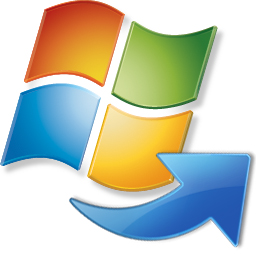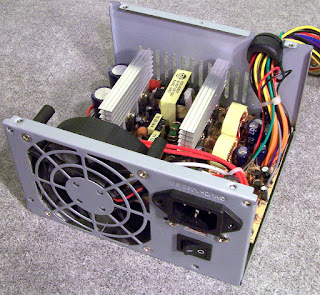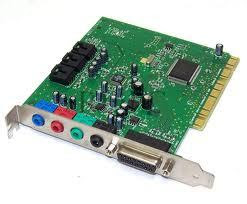
Upgrade Windows
In the previous topic, you installed Microsoft Windows from scratch. The other primary type of installation is an upgrade installation. In this topic, you will upgrade Windows.
As a system professional, you’ll probably be called upon to upgrade systems even more often than performing from-scratch installations. Software vendors such as Microsoft are constantly coming out with new operating system versions, and it is much more economical to upgrade existing systems when possible rather than to purchase new computer hardware with the new version pre-installed. Whether you are upgrading for an individual user or as part of a company-wide migration plan, the skills in this topic should help you upgrade older versions of Windows to the current version successfully.
Supported Upgrade Paths
Existing Windows installations can be directly upgraded to specific other versions of Windows.
In the previous topic, you installed Microsoft Windows from scratch. The other primary type of installation is an upgrade installation. In this topic, you will upgrade Windows.
As a system professional, you’ll probably be called upon to upgrade systems even more often than performing from-scratch installations. Software vendors such as Microsoft are constantly coming out with new operating system versions, and it is much more economical to upgrade existing systems when possible rather than to purchase new computer hardware with the new version pre-installed. Whether you are upgrading for an individual user or as part of a company-wide migration plan, the skills in this topic should help you upgrade older versions of Windows to the current version successfully.
Supported Upgrade Paths
Existing Windows installations can be directly upgraded to specific other versions of Windows.
Current Operating System
Windows 95
Windows 98/98 SE/Me Windows NT Workstation 4.0 Windows 2000 Professional
Windows XP Home Edition Windows XP Professional
Unsupported Upgrades
Windows 95
Windows 98/98 SE/Me Windows NT Workstation 4.0 Windows 2000 Professional
Windows XP Home Edition Windows XP Professional
Unsupported Upgrades
Can be Upgraded To
Windows 98, Windows 2000 Professional
Windows 2000 Professional, Windows XP Professional
Windows 2000 Professional, Windows XP Professional
Windows XP Professional; will be upgradeable to Windows Vista
Windows XP Professional Windows Vista
Windows 98, Windows 2000 Professional
Windows 2000 Professional, Windows XP Professional
Windows 2000 Professional, Windows XP Professional
Windows XP Professional; will be upgradeable to Windows Vista
Windows XP Professional Windows Vista
Upgrading Windows 95 directly to Windows XP Professional is not supported. It was possible
to upgrade a Windows 95 computer to Windows 2000 Professional and subsequently to Win-
dows XP Professional. However, Windows 2000 Professional is no longer commercially
available. If you still have installation media for Windows 2000 you can follow this indirect
upgrade path. Generally, it is best to perform a clean installation of Windows XP Professional
on any systems that are still running Windows 95.

 Apple also provides tools to enable IBM PC users to transfer files and software when migrat-
ing from an IBM Windows PC to a Macintosh. For more information on moving from
Windows to Macintosh, see www.apple.com/macosx/switch.
Apple also provides tools to enable IBM PC users to transfer files and software when migrat-
ing from an IBM Windows PC to a Macintosh. For more information on moving from
Windows to Macintosh, see www.apple.com/macosx/switch.
Explain to the students
that you will discuss more
details of network protocol
configuration at a later
point. This is just an issue
to keep in mind during the
upgrade preparation
process.
Hardware Upgrade Compatibility
If you are upgrading an existing computer to a different version of Windows, you will need to check your existing hardware against the Tested Products List to ensure that the existing com- puter hardware is compatible with the target operating system. For Windows XP Professional, you can also run the Microsoft Windows Upgrade Advisor from the product compact disc to generate compatibility reports. The Setup program will also run a compatibility check during the upgrade process.
Network Compatibility Considerations
As part of the hardware compatibility check, you should verify that the new version of Win- dows will support the existing network adapter card. In most cases, the network configuration settings will upgrade smoothly to the new version of Windows if the card is supported.
However, when you are upgrading an older version of Windows, there may be cases in which you find that the old system is still running legacy protocols, such as NetBEUI and NWLink, that are not supported by current Windows network implementations. Because the current de facto standard network protocol is TCP/IP, you will need to plan to upgrade and configure these systems for TCP/IP during the upgrade process.
Software Upgrade Compatibility
Before upgrading, you should check the Tested Products List or run the Microsoft Windows Upgrade Advisor to verify that your existing applications will run properly on the new version of Windows. The Setup program will also run a compatibility check during the upgrade process. Applications written for Windows 2000 should work well on Windows XP; legacy applications might require one or more of the compatibility fixes built in to Windows XP. You can select an appropriate application compatibility mode for the application after you have upgraded the operating system.
Application Compatibility Modes
The Windows XP application compatibility modes are Windows 95, Windows 98/Windows Me, Windows NT 4.0, Windows 2000, 256 colors, and 640 x 480 screen resolution. You can set the appropriate mode for a particular application by running the Program Compatibility Wizard from Windows XP Help and Support Center. See the article “Windows XP Application Compatibility Technologies” at www.microsoft.com/technet/prodtechnol/winxppro/plan/ appcmpxp.mspx for more information.
Macintosh Software Compatibility
Applications that ran in previous releases of Mac OS X should be supported when you upgrade to any current release.
If you need to use Mac OS 9 applications on a Mac OS X system, you can do so in the Clas- sic environment in Mac OS X. To use the Classic environment, you must have a Mac OS 9 System Folder installed on your computer, either on the same hard disk as Mac OS X, or on another disk or disk partition. For more information on the Classic environment in Mac OS X, see www.apple.com/support/panther/moretopics/.
If you are upgrading an existing computer to a different version of Windows, you will need to check your existing hardware against the Tested Products List to ensure that the existing com- puter hardware is compatible with the target operating system. For Windows XP Professional, you can also run the Microsoft Windows Upgrade Advisor from the product compact disc to generate compatibility reports. The Setup program will also run a compatibility check during the upgrade process.
Network Compatibility Considerations
As part of the hardware compatibility check, you should verify that the new version of Win- dows will support the existing network adapter card. In most cases, the network configuration settings will upgrade smoothly to the new version of Windows if the card is supported.
However, when you are upgrading an older version of Windows, there may be cases in which you find that the old system is still running legacy protocols, such as NetBEUI and NWLink, that are not supported by current Windows network implementations. Because the current de facto standard network protocol is TCP/IP, you will need to plan to upgrade and configure these systems for TCP/IP during the upgrade process.
Software Upgrade Compatibility
Before upgrading, you should check the Tested Products List or run the Microsoft Windows Upgrade Advisor to verify that your existing applications will run properly on the new version of Windows. The Setup program will also run a compatibility check during the upgrade process. Applications written for Windows 2000 should work well on Windows XP; legacy applications might require one or more of the compatibility fixes built in to Windows XP. You can select an appropriate application compatibility mode for the application after you have upgraded the operating system.
Application Compatibility Modes
The Windows XP application compatibility modes are Windows 95, Windows 98/Windows Me, Windows NT 4.0, Windows 2000, 256 colors, and 640 x 480 screen resolution. You can set the appropriate mode for a particular application by running the Program Compatibility Wizard from Windows XP Help and Support Center. See the article “Windows XP Application Compatibility Technologies” at www.microsoft.com/technet/prodtechnol/winxppro/plan/ appcmpxp.mspx for more information.
Macintosh Software Compatibility
Applications that ran in previous releases of Mac OS X should be supported when you upgrade to any current release.
If you need to use Mac OS 9 applications on a Mac OS X system, you can do so in the Clas- sic environment in Mac OS X. To use the Classic environment, you must have a Mac OS 9 System Folder installed on your computer, either on the same hard disk as Mac OS X, or on another disk or disk partition. For more information on the Classic environment in Mac OS X, see www.apple.com/support/panther/moretopics/.
Linux Software Compatibility
Check your Linux vendor’s website and read the technical documentation for the distribution of Linux you plan to upgrade to in order to determine if your existing applications will be sup- ported under the new version. You can also check the resources at www.linux.org/apps for lists of Linux-compatible applications in various categories from a number of vendors. You can also register as a user at www.linux.org/user and post questions about particular applications in the online user forums.
How to Upgrade Windows
Procedure Reference: Upgrade to Windows XP Professional
To upgrade to Windows XP Professional:
Check your Linux vendor’s website and read the technical documentation for the distribution of Linux you plan to upgrade to in order to determine if your existing applications will be sup- ported under the new version. You can also check the resources at www.linux.org/apps for lists of Linux-compatible applications in various categories from a number of vendors. You can also register as a user at www.linux.org/user and post questions about particular applications in the online user forums.
How to Upgrade Windows
Procedure Reference: Upgrade to Windows XP Professional
To upgrade to Windows XP Professional:
-
Verify that the computer meets the hardware requirements for Windows XP. You can run
compatibility checks by clicking Check System Compatibility on the opening screen of
the Windows XP installation CD-ROM.
-
Back up any existing user data files.
-
Insert the Windows XP Professional CD-ROM. The setup program should launch
automatically. (You can also launch the winnt32.exe installation program manually from
the installation source files.)
-
Click Install Windows XP and select Upgrade as the installation type.
-
Accept the license agreement and enter the Product Key.
-
On the Get Updated Setup Files page, make the appropriate choice depending on whether
or not you want to check for updated files on the Internet.
-
● Yes, Download The Updated Setup Files (Recommended).
-
● No, Skip This Step And Continue Installing Windows.
-
● Yes, Download The Updated Setup Files (Recommended).
-
Follow the remaining steps in the Setup Wizard to complete the installation.
-
Log on to Windows XP.
-
Connect to Windows Update and install any current Service Packs or critical security
updates.
-
Test the Windows installation to verify that the Setup program properly detected your
hardware and that all system devices are working properly.
-
If not all devices are functioning, use the Add Hardware tool in Control Panel to add any
additional devices, or install new or updated device drivers from the Microsoft or manu-
facturer’s website.
-
Use the Add Or Remove Programs tool in Control Panel to add any desired additional
Windows XP components to your system.





